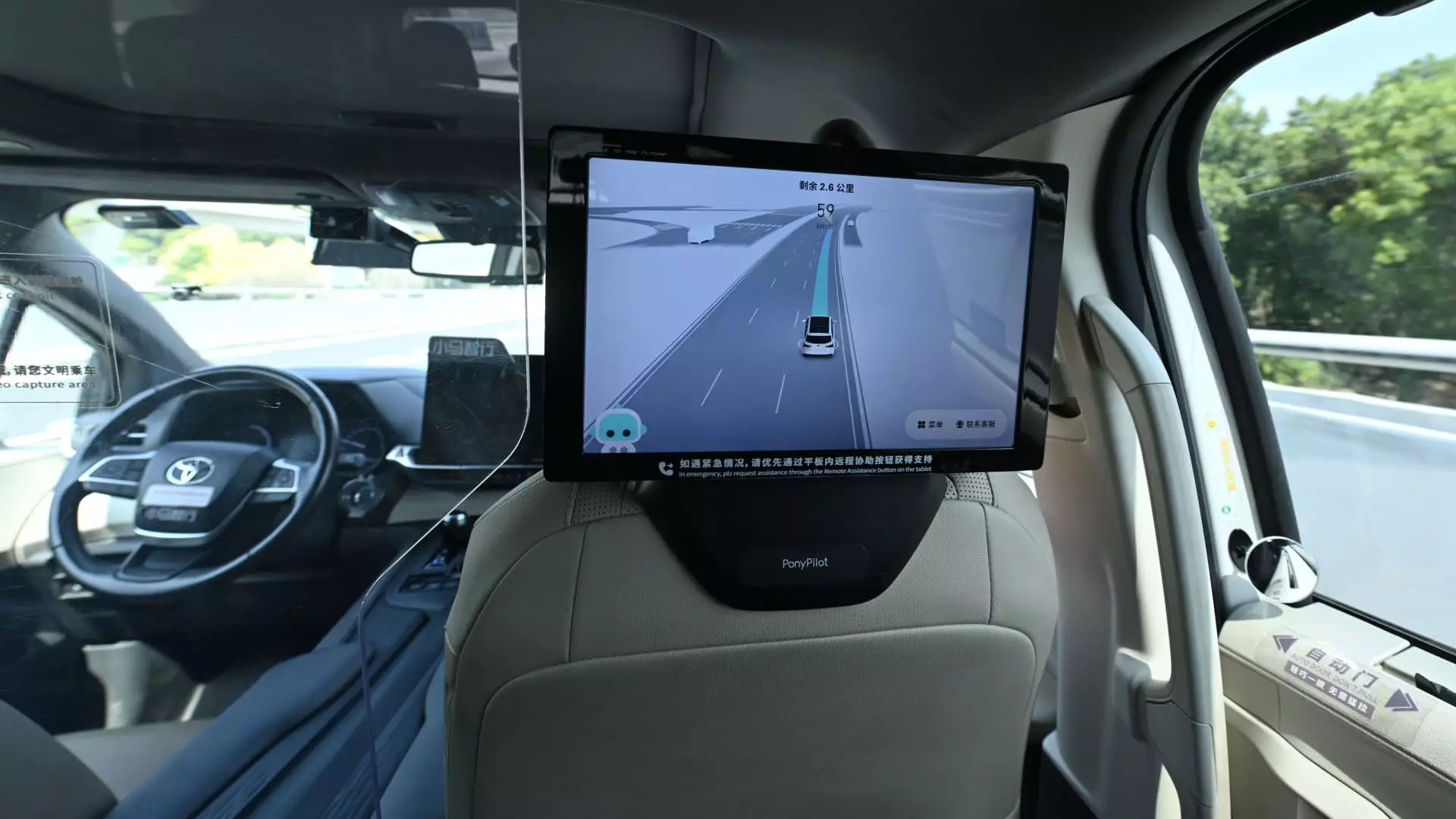In recent years, the narrative around robotaxis has shifted from science fiction to plausible reality. Tech giants, automotive manufacturers, and innovative startups have touted robotaxis as the next revolution in urban mobility. Yet, beneath the glossy headlines and promising statistics lies a sobering reality: the widespread integration of autonomous taxis remains closer to a mirage than an imminent transport standard. While companies like Waymo, Pony AI, and WeRide are initiating pilot projects and expanding into new markets, the truth is that these developments are riddled with limitations, economic uncertainties, and safety concerns that challenge the rosy forecasts of mass adoption.
The technological achievements reported—such as Pony AI reducing parts costs by 70% or Waymo’s fleet conducting hundreds of thousands of trips—are impressive on paper. However, these figures often mask the scale of the underlying hurdles. Autonomous vehicles still wrestle with unpredictable environments, regulatory obstacles, and the paltry number of operational vehicles relative to mainstream needs. These pilot programs are more akin to technological demonstrations than signs of a transportation revolution. It is crucial to critically assess whether these experimental fleets can ever truly become mainstream, or if they are merely expensive toys in the hands of tech firms seeking to dominate a future that may not materialize as envisioned.
Market Expansion Is Not Equating to Market Acceptance
International expansion efforts by Chinese operators like WeRide and Baidu suggest an optimistic belief that autonomous taxis will soon become a global phenomenon. These companies are pushing into markets in the Middle East, Europe, and beyond, often claiming early successes or regulatory breakthroughs. But this expansion glosses over the fundamental question: will consumers accept robotaxis on a broad scale, and can these companies sustain profitability outside their home markets in China?
While these companies tout permits and pilot programs, widespread consumer trust is still absent. Human drivers have built-in social cues, accountability, and a sense of safety that passengers often find lacking in autonomous vehicles. The growing deployment in China is often confined to specific regions with government backing, subsidies, or relaxed regulations—conditions unlikely to replicate easily elsewhere. Moreover, the financial viability of these ventures is far from assured. As Morgan Stanley and Bank of America highlight, many Chinese robotaxi operators are approaching breakeven, yet this is largely limited to specific cities and ignores ongoing costs, R&D, and potential liabilities. The dream of cheap, fully autonomous, city-wide ride services remains distant, and the notion that we will see hundreds of thousands of robotaxis globally within the next decade is, at best, overly optimistic.
Safety and Cost: The Real Barriers to Mainstream Adoption
A central issue that critics—myself included—highlight is the safety risk inherent in deploying autonomous vehicles on busy city streets. Pony AI’s CTO emphasized safety improvements, but the reality remains that autonomous driving technology is complex and unpredictable. Fragmented regulations, inconsistent testing standards, and differing legal liabilities create a fragile environment in which deployment can be scaled with confidence.
Cost is another critical factor that undermines the narrative of affordable autonomy, especially in comparison to traditional taxis or human-driven ride-hailing. Although Chinese companies claim to have cut parts costs substantially, the total cost of ownership for a robotaxi—maintenance, cybersecurity, upgrades, and liabilities—still dwarfs that of conventional vehicles. Waymo’s fleet costs around $200,000 per car, whereas Baidu’s Apollo RT6 is priced at roughly $37,000, but this does not account for the extensive R&D, legal costs, and obstacle-costs that will inevitably increase operating expenses. These figures suggest that the economic argument for mass robotaxi deployment may be a mirage, especially if safety incidents or regulatory delays arise.
Furthermore, safety issues are no longer hypothetical. Instances of autonomous vehicles malfunctioning or failing to navigate complex urban environments threaten public confidence and could provoke stringent regulations that hinder expansion. The fact that many Chinese operators are approaching financial breakeven on limited fleets hints that profitability, safety, and scale are still years away from alignment.
The Overhyped Intersection Between Tech Ambition and Real-World Challenges
The fixation with global expansion—particularly by Chinese firms—is driven by a desire to dominate the emerging autonomous market. Yet, such ambitions distort the true state of the technology and its readiness for mass rollouts. The reality is that regulatory hurdles, consumer skepticism, and high costs will likely slow the pace of adoption, regardless of geographic ambitions.
Meanwhile, companies like Waymo are cautious, expanding gradually and focusing on controlled environments. They are unlikely to sacrifice safety or regulatory compliance for rapid deployment. On the other hand, Chinese startups are seeking to capitalize on government support and large internal markets, which may give them an initial advantage, but the long-term sustainability of their operations remains questionable without addressing fundamental safety and economic issues.
The narrative around autonomous taxis as a near-future reality is more a reflection of industry hype and geopolitical rivalry than a verifiable trend. While technological milestones are achieved, the leap from demonstrational fleets to fully autonomous, safe, affordable, and publicly accepted transportation services is fraught with obstacles. The optimistic forecasts, suggesting that 300,000 robotaxis will navigate Chinese cities alone in the next six years, likely overlook the depth of these challenges and overestimate the speed at which regulatory and social acceptance can occur.
Overall, the prominent stories of robotaxi progress are better understood as early-stage experiments rather than the harbingers of an imminent autonomous commute revolution. The path ahead is clouded with significant economic, technical, and safety hurdles that suggest this innovation will unfold more slowly—and less flawlessly—than many industry cheerleaders claim.

